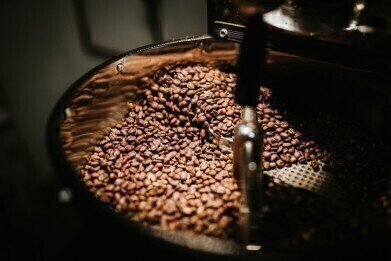GC, MDGC
When the World’s Most Expensive Coffee is Worthless, How Will We Know?
Mar 05 2015
Ever hear about the hipster who burnt his tongue on civet coffee? He drank it before it was cool.
If you haven’t heard of civet coffee, sometimes known by its Indonesian moniker Kopi Luwak, you are behind the times on expensive hipster coffee news. Civet coffee, so named because of the furry little forest creature which aids in its production, is one of the most expensive brands out there and retails from anywhere between £15 and £250 for a bag, depending on the size. But where does it come from?
What is Kopi Luwak?
Kopi Luwak is so highly sought-after because of the unique taste derived from its very unique production process. Whereas normal coffee beans are picked by hand, stripped of their fruit and then cleaned and roasted, civet coffee beans get a helping hand from nature.
The South East Asian palm civet – a catlike mammal – roams the forest floor, foraging for the very ripest coffee beans. After consuming them, the fruit is stripped from the bean through the natural process of digestion, and then the little creatures excrete the choice beans throughout the forest, ready for the coffee farmers to scoop up, hose down and roast. This inimitable process of production explains why they are so expensive… and also why others have tried to imitate them.
Less reputable coffee firms have attempted to board the Kopi bandwagon by either marketing normal coffee beans as civet ones, or “cutting” pure civet with a diluted mix. Given the huge price tags attached to the bags, it’s not surprising people wish to have some sort of assurance that the civet poop coffee they are buying was in fact civet poop coffee.
Chromatography Acts as Bull-civet Detector
Who to call when you need an answer about the purity of your coffee? The world of science, of course. Specifically, the technique of gas chromatography and mass spectrometry (GC-MS), which breaks down a compound into its various molecules by converting them into gaseous form, and identifying them by their reaction times.
Using this wondrous technique, scientists from Indonesia and Japan were able to analyse samples of genuine Kopi Luwak (verified and supervised by themselves) with several different brands of commercially sold beans across Indonesia. Those which hadn’t been ingested by the civets were betrayed by their vastly-different acidic profile.
It is thought that perhaps the gastric acids and microbes in the civet’s internal digestive system are able to impart unique acidic properties to the beans – which, in turn, affects their flavour. The full hypothesis of this process was published in the Journal of Agricultural and Food Chemistry in July of last year. As a result, the scientists were able to identify those culprits which used 50% genuine civet beans (or less) in their mixture and shed some light on the murky underworld of faecal coffee bean trafficking.
Until this experiment, the only way of differentiating Kopi Luwak from its impersonators was through simple smell and colour. Of course, this was highly unreliable, and scientists hope that the new data uncovered by their investigation will be invaluable in keeping expensive coffee worth the price tag in the future.
Digital Edition
Chromatography Today - Buyers' Guide 2022
October 2023
In This Edition Modern & Practical Applications - Accelerating ADC Development with Mass Spectrometry - Implementing High-Resolution Ion Mobility into Peptide Mapping Workflows Chromatogr...
View all digital editions
Events
Apr 23 2024 Kintex, South Korea
Apr 23 2024 Seoul, South Korea
Apr 28 2024 Montreal, Quebec, Canada
May 05 2024 Seville, Spain
May 15 2024 Birmingham, UK














